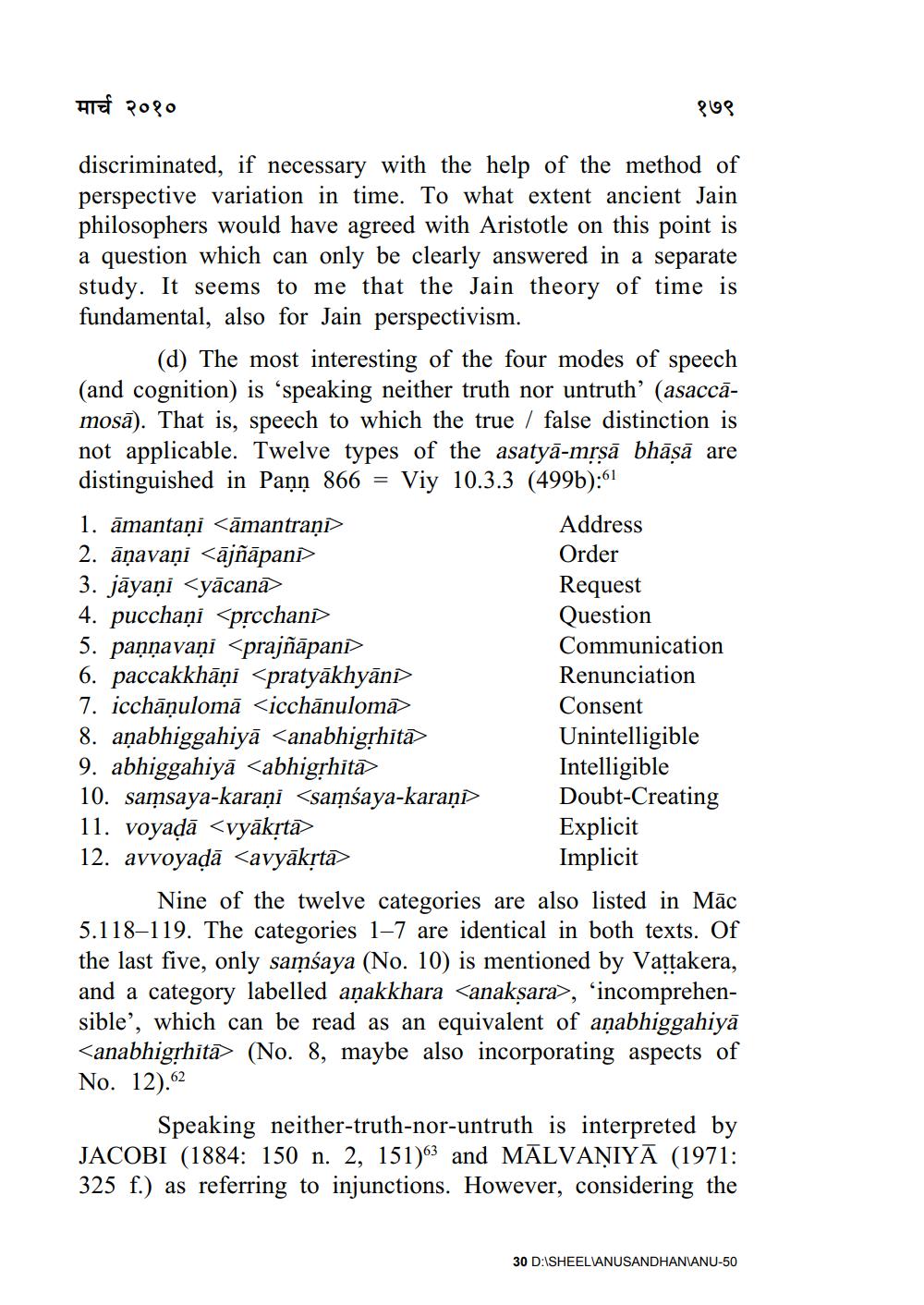________________
मार्च २०१०
discriminated, if necessary with the help of the method of perspective variation in time. To what extent ancient Jain philosophers would have agreed with Aristotle on this point is a question which can only be clearly answered in a separate study. It seems to me that the Jain theory of time is fundamental, also for Jain perspectivism.
(d) The most interesting of the four modes of speech (and cognition) is 'speaking neither truth nor untruth' (asaccamosa). That is, speech to which the true false distinction is not applicable. Twelve types of the asatya-mṛṣā bhāṣā are distinguished in Pann 866 Viy 10.3.3 (499b):61
1. āmantaṇī <āmantraṇī>
2. āṇavaṇī <ājñāpani
3. jāyaṇi <yācanā
4. pucchani <prcchani
=
5. pannavani <prajñāpani> 6. paccakkhāņi <pratyākhyānī>
7. icchāņulomā <icchanuloma
8. aṇabhiggahiyā <anabhigṛhita>
9. abhiggahiya <abhigṛhita> 10. samsaya-karaṇi <samśaya-karaṇī 11. voyaḍā <vyākṛtā
12. avvoyaḍā <avyākṛtā>
१७९
Address
Order
Request
Question
Communication
Renunciation
Consent
Unintelligible
Intelligible Doubt-Creating Explicit
Implicit
Nine of the twelve categories are also listed in Mac 5.118-119. The categories 1-7 are identical in both texts. Of the last five, only samsaya (No. 10) is mentioned by Vaṭṭakera, and a category labelled aṇakkhara <anakṣara>, 'incomprehensible', which can be read as an equivalent of aṇabhiggahiyā <anabhigṛhita (No. 8, maybe also incorporating aspects of No. 12).62
Speaking neither-truth-nor-untruth is interpreted by JACOBI (1884: 150 n. 2, 151)63 and MĀLVAṆIYĀ (1971: 325 f.) as referring to injunctions. However, considering the
30 D:\SHEELVANUSANDHANIANU-50




